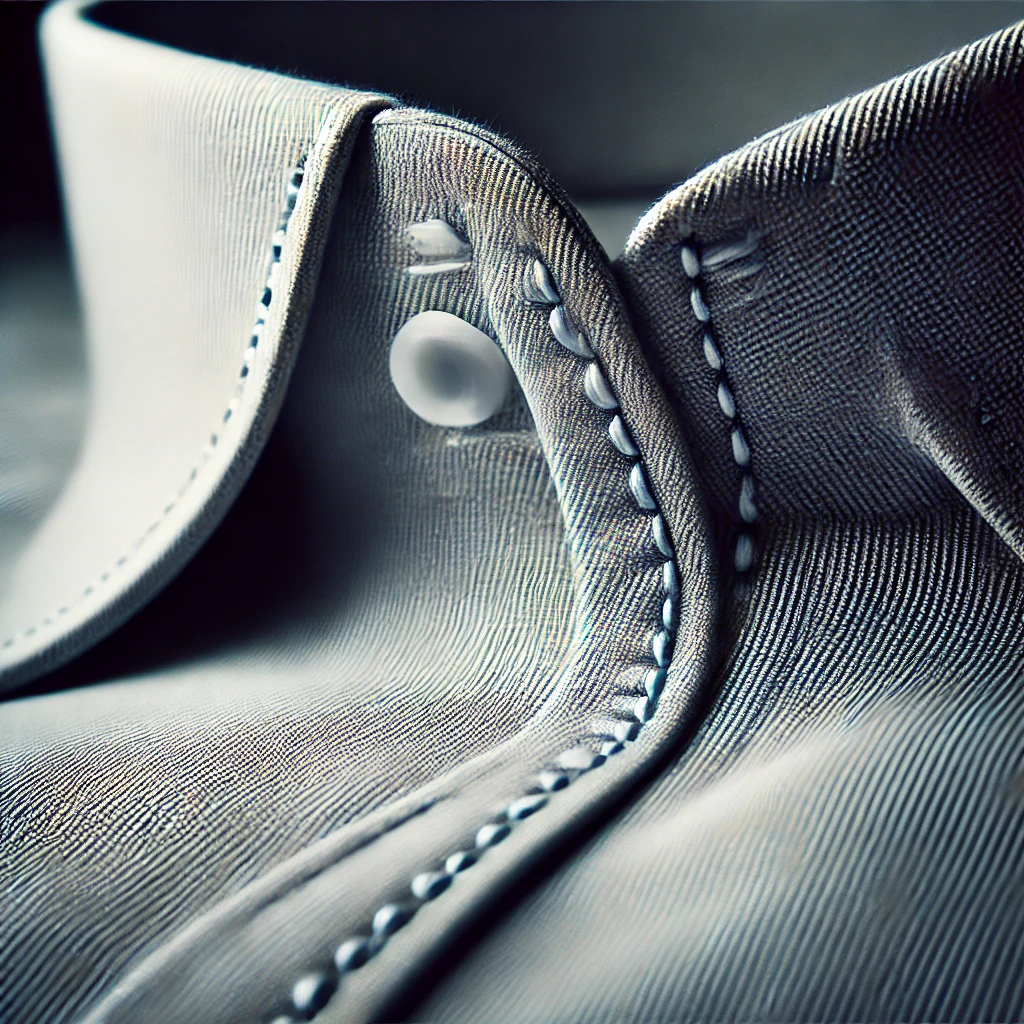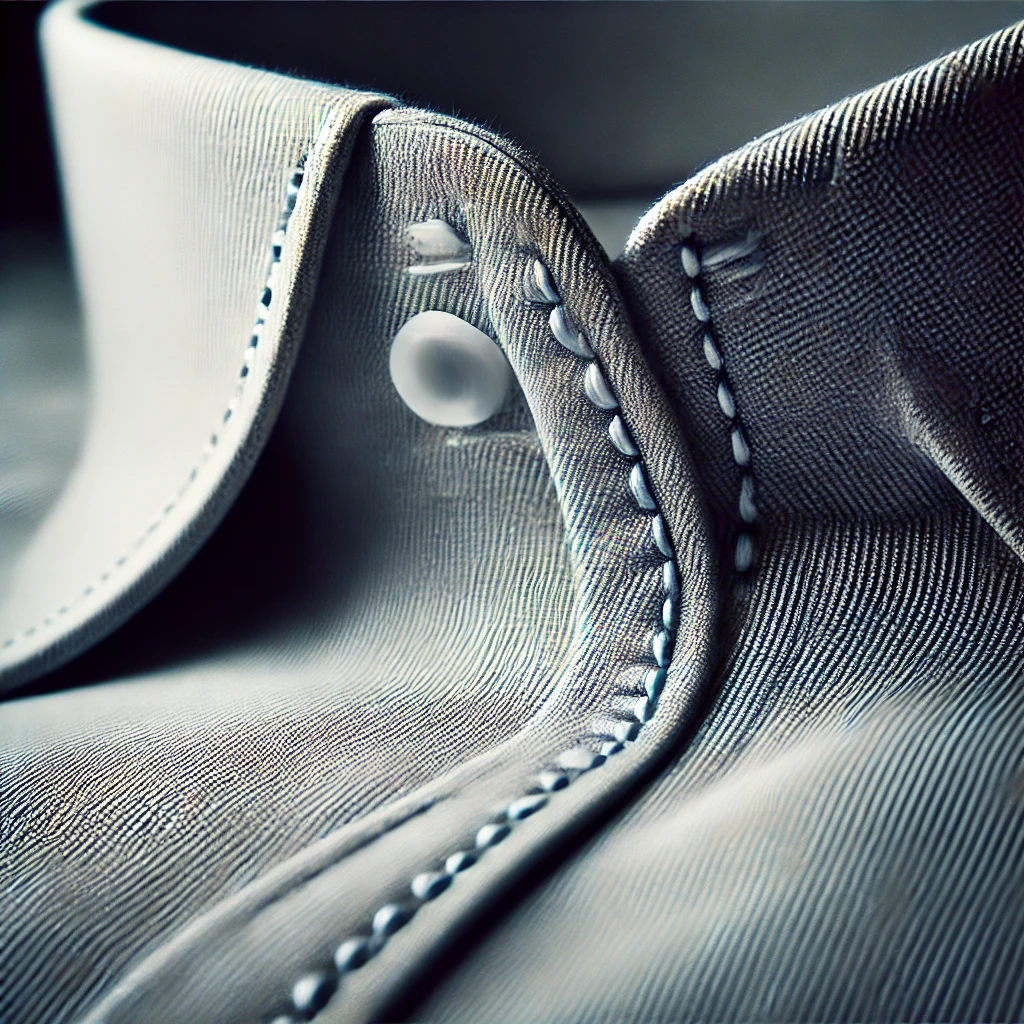
Introduction
One of the most important factors that determine the quality of a shirt is its “sewing technique.” Not only does the design matter, but the precision of the stitching and finishing significantly affect the durability and comfort of the shirt. Especially between high-end and regular shirts, there are noticeable differences in stitch density, thread type, and buttonhole construction. Therefore, carefully checking these aspects before purchasing is crucial.
In this article, we will explain the key points to assess a shirt’s sewing techniques. We will introduce various aspects such as stitch types, quality differences, and the comparison between hand-sewn and machine-sewn shirts, using concrete examples to help you choose the right shirt.
The Impact of Sewing Techniques on Shirt Quality
How Stitching Affects the Durability of a Shirt
The strength of a shirt’s stitching directly impacts how long it will last. Weak seams can fray or even tear after just a few washes. This is especially true for areas like the sleeves and side seams, which experience frequent movement and tension.
For example, high-end shirts often use a “French seam,” where the stitches are concealed inside the fabric. This technique not only enhances the shirt’s appearance but also prevents the seam from irritating the skin, improving comfort.
On the other hand, inexpensive shirts typically use “overlock stitching,” which speeds up the sewing process but results in exposed seams that may feel rough against the skin. Therefore, when selecting a shirt, closely inspecting the seam finishing is essential.
The Differences Between Good and Poor Stitching
When checking a shirt’s stitching quality, consider the following three points:
- Whether the stitching width is consistent
- The number of stitches per inch
- Whether there are loose threads or fraying
For instance, high-quality shirts generally have “14–18 stitches per inch,” which makes the seams more durable. In contrast, lower-end shirts often have fewer than 10 stitches per inch, resulting in weaker seams that are prone to wear and tear.
Key Points to Check in Stitching Quality
How to Examine Stitch Density and Uniformity
One of the key indicators of a well-made shirt is the stitch density. The finer and more uniform the stitching, the stronger the shirt will be. A good rule of thumb is to look for at least 14 stitches per inch in a high-end dress shirt.
A simple way to check is by holding the shirt up to the light and examining the seams. If the stitches appear evenly spaced and tight, the shirt is likely well-made. Conversely, if there are visible gaps or loose threads, the quality may be lower.
The Difference Between Single and Double Stitching
Single stitching is commonly found in casual shirts and some lower-cost dress shirts. While it provides flexibility, it is generally weaker than double stitching.
High-quality dress shirts, especially those from luxury brands, often feature double stitching. This technique involves two rows of parallel stitches, reinforcing the seam and ensuring longevity. If you want a durable shirt that will withstand regular washing, double stitching is a reliable indicator of good quality.
Sewing Techniques to Prevent Fraying
Fraying is a common issue with poorly sewn shirts. However, certain sewing methods can prevent this problem:
- French Seams: Conceals raw edges inside the seam, providing a clean finish and added durability.
- Flat-Felled Seams: Used in high-end shirts and workwear to reinforce the fabric and prevent fraying.
- Overlock Stitching: Common in casual shirts, but not as durable as French or flat-felled seams.
If you want a long-lasting shirt, choosing one with French or flat-felled seams is highly recommended.
Hand-Sewn vs. Machine-Sewn: Differences and How to Identify Them
Advantages and Disadvantages of Hand-Sewn Shirts
Hand-sewn shirts are often considered a luxury due to the craftsmanship involved. The stitches are carefully done, allowing for greater flexibility and a more natural feel.
However, hand-sewn shirts are usually more expensive and take longer to produce. If you prefer artisanal quality and superior comfort, a hand-sewn shirt might be a worthwhile investment.
Features and Price Differences of Machine-Sewn Shirts
Machine-sewn shirts dominate the market due to their efficiency and consistency. They offer durability at a lower price, making them an accessible choice for most people.
That said, machine-sewn shirts may lack the flexibility and natural drape of hand-sewn garments. If you prioritize affordability and uniform quality, a machine-sewn shirt is a good option.
How to Distinguish Between Hand-Made and Machine-Made Shirts
To differentiate between hand-sewn and machine-sewn shirts, look at the stitching details:
- Hand-sewn shirts: Have slight irregularities in stitch length, indicating manual work.
- Machine-sewn shirts: Feature perfectly uniform stitches with no variations.
Additionally, check the buttonholes. Hand-sewn buttonholes often have tighter, more intricate stitching, while machine-sewn buttonholes are more uniform but sometimes looser.
Final Quality Checkpoints When Buying a Shirt
Fabric Quality and Texture
Beyond stitching, the fabric itself plays a crucial role in the overall quality of a shirt. Look for smooth, tightly woven materials with a slight sheen, as these indicate premium fabric.
The Impact of Thread Type on Durability
The thread used in stitching also affects longevity. High-quality shirts often use polyester-cotton blend threads or silk threads for extra strength.
Final Checklist for Choosing a Long-Lasting Shirt
Before making a purchase, go through this final checklist:
- Check for consistent stitch density (at least 14 stitches per inch)
- Examine the seams for reinforcement techniques (French or flat-felled seams)
- Inspect buttonholes for tight, durable stitching
- Feel the fabric for a smooth and luxurious texture
Conclusion
When choosing a high-quality shirt, sewing techniques play a crucial role in determining durability, comfort, and overall aesthetics. By carefully examining stitch density, seam finishing, and buttonhole construction, you can distinguish between premium and lower-quality shirts.
Additionally, understanding the differences between hand-sewn and machine-sewn shirts helps in making an informed purchase. While hand-sewn shirts offer artisanal craftsmanship and flexibility, machine-sewn shirts provide consistency and affordability.
Finally, beyond stitching, fabric quality and thread type are essential factors that impact a shirt’s longevity. Always check for fine, even stitching, reinforced seams, and high-quality materials to ensure that your shirt maintains its shape and appearance over time.
By following these guidelines, you can confidently select a shirt that not only looks stylish but also stands the test of time.



Comment